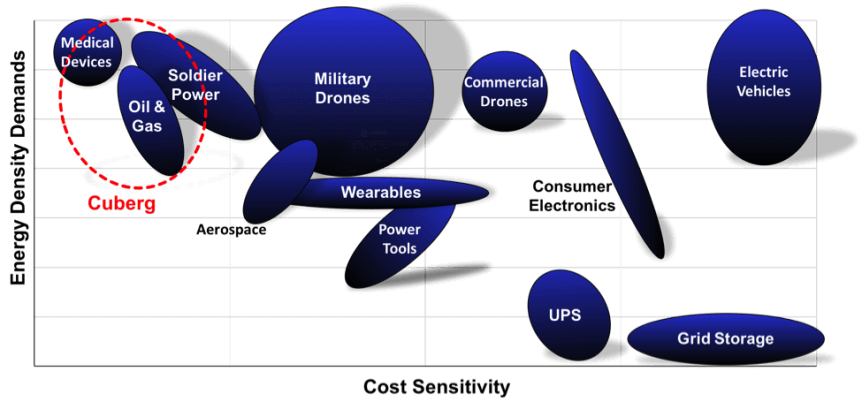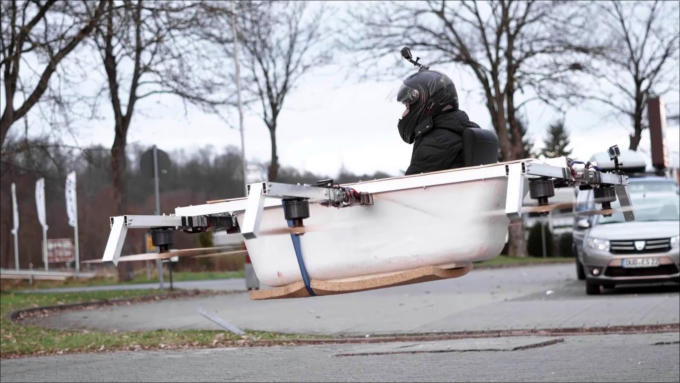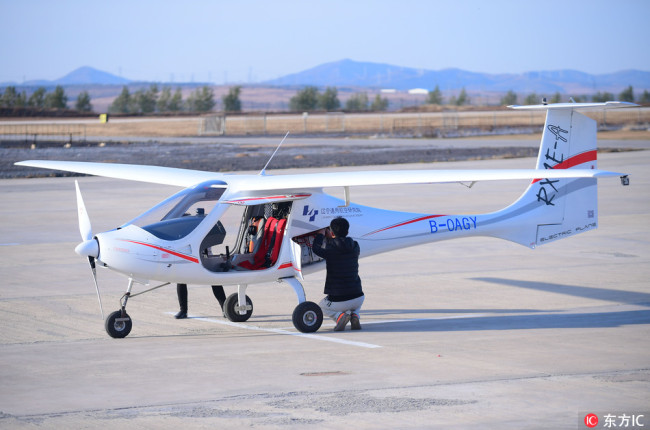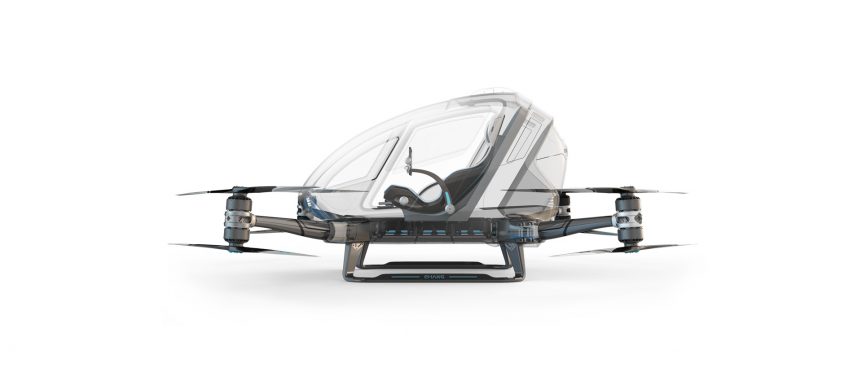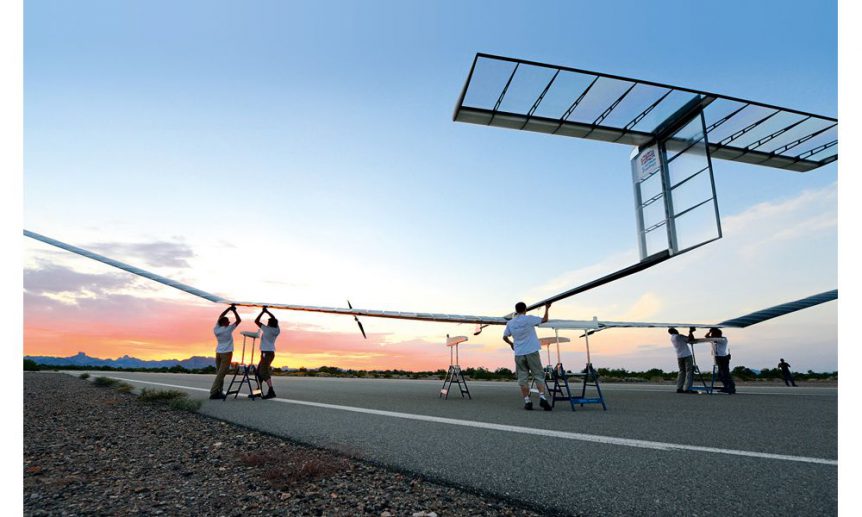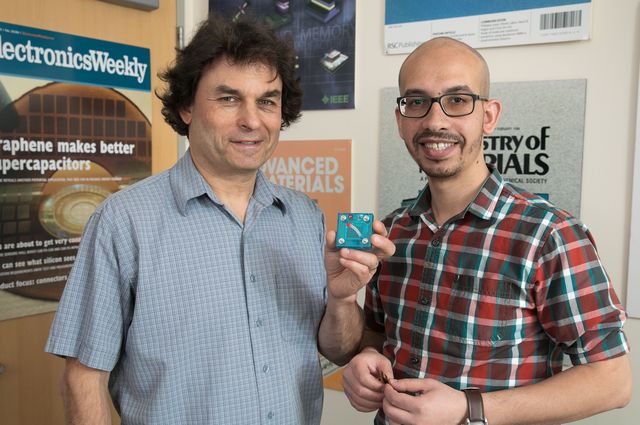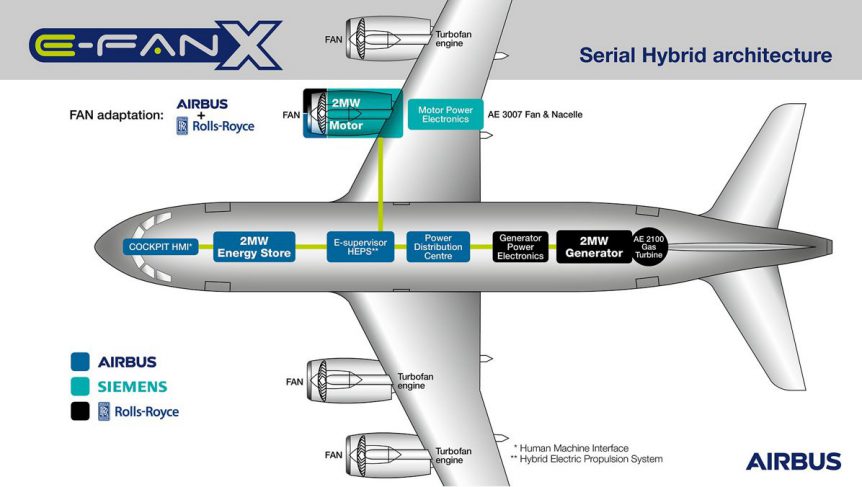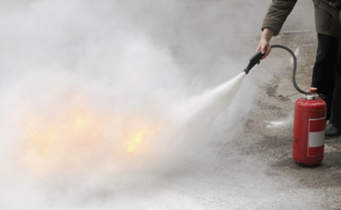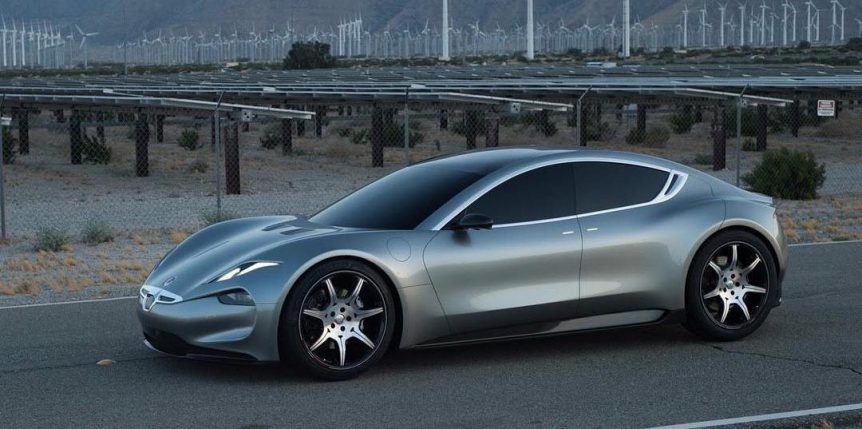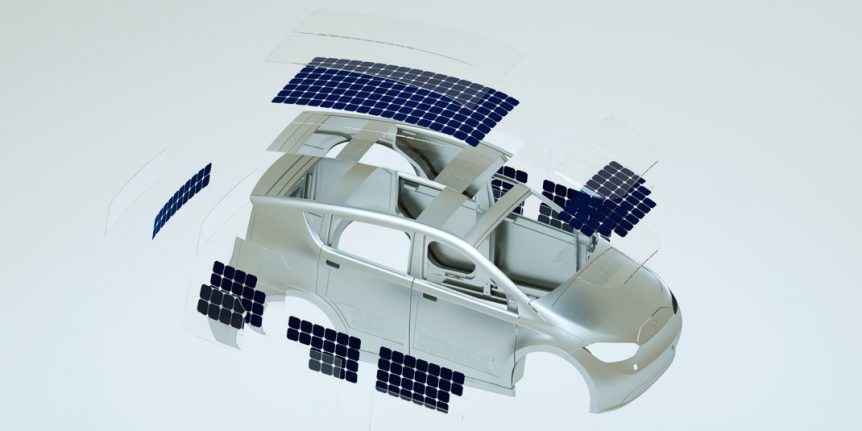Cuberg, a battery startup “Founded based on graduate research work in the materials science department at Stanford,” includes individuals who worked with Yi Cui at the school. They promote their safe electrolyte as a key element in their new battery. “Our highly stable proprietary electrolyte enables the use of high-voltage cathodes and lithium metal anodes in a safe and reliable format.” Their video shows the relative safety of that premise. It starts, though, with a quick review of their manufacturing techniques, which are similar to standard methods used in most batteries. The team, headed by Richard Wang, “Entrepreneur and Battery Scientist,” includes co-founder Mauro Pasta, an Associate Professor at Oxford University. His Linked In profile includes this note: “Cuberg is an energy startup company developing a new generation of safer and higher energy batteries based on a high-performance electrolyte technology. When combined with our unique cell design, our batteries deliver not only improved energy but also greatly enhanced shelf life, …
When You Wake Up Hungry – Fly to the Bakery!
Electric-Flight.eu reports on three Germans who made a bathtub fly – and used it to fetch pastries. As the website reports, “The Real Life Guys” are two Darmstadt students and one DB train attendant who shook up the media last week . They connected a bathtub with an aluminum scaffolding and six 9.6 [kilowatt] motors (€1 065 or about $1,191[each]) from the model building sector to 42-Volt batteries and blew it up.” “Blew it up” means lifting it skyward on the power of what look like six Hacker model airplane motors, capable of putting out 15 kilowatts (20.1 hp) each for 15 seconds. The 9.6 kW (12.9 hp) output cited in the Electric-Flight article seems realistic for sustained output, and the €1,050 price on Hacker’s website seems to confirm that this is the motor used. That such a device and the idea of actually hopping in and going for a dry run in the sky is daunting gives proof to …
China Updates, Increases Range for RX1E-A
China Global Television Network, or CGTN, reports on an updated version of an electric airplane that first took flight in 2015. The original RX1E could fly for 45 minutes on its battery pack, limiting its utility. The RX1E-A’s six lithium battery packs can keep the new machine in the air for up to two hours and achieve a maximum speed of 160 kilometers per hour (99.4 mph). This type of performance makes it more suitable for training and cross-country flights. Similar to a long-winged version of Pipistrel’s Alpha Electro Trainer, soon to be produced in China, the RX1E-A grosses out at 600 kilograms (1,320 pounds), suitable for most Light Sport Aircraft regulations. It will be interesting to see if production plans match those for Pipistrel’s electric trainer, and if this leads to a healthy competition between the two companies. Designed and built by the Liaoning General Aviation Academy (LGAA), the plane made its maiden flight from the Caihu airport in …
Too Late for Boxing Day*, Ehang Delivers the Goods
Broadcast live on December 24, this demonstration of the eHang 184 is, interestingly, an English-language presentation, with a lot of English names floating about. Someone named Mike shows off the Ehang 184 in this Christmas-related special. His friend Miranda snugs herself into the compact passenger compartment, tries on the safety harnesses, and deplanes before committing aviation. The video is a sales pitch for the drone manufacturer – actually more of a long wind-up before a pitch into the air. Mike takes us through a tutorial on the craft, which seats one passenger and has eight propellers that are mounted on four arms (one-eight-four, or 184). The rather ungainly entrance and exit of the petite young woman suggests possible improvements eHang’s designers might make in the otherwise swoopy-looking gull-wing doors. They might also consider how to protect the unwary from the knee- and ankle-high 1.6 meter (5.25 feet) propellers. One hopes the designers have incorporated a safety propeller stop system such as …
Airbus, Williams Team to Expand Zephyr Program
What’s the HAPS, Guys? Airbus and Williams Advanced Engineering, two heavy hitters with the world’s largest commercial airliner and the world’s fastest formula electric cars, are collaborating on making a light, slow airplane stay up indefinitely. Their memorandum of understanding (MOU) seeks to integrate Williams’ demonstrated abilities with “ultra-lightweight materials, battery technologies and electrical cell chemistries… in… Airbus’ Zephyr High Altitude Pseudo-Satellite (HAPS) program.” Airbus Defense and Space has worked with Sion Power Corporation since 2015 to use Sion’s proprietary lithium-Sulfur (Li-S) batteries for use in Airbus’ Zephyr aircraft. The current Zephyr S is the latest iteration of a series of solar-powered, unmanned aerial systems (UAS) that will fly at 65,000 feet for months at a time. High Over Dubai Airbus and Sion have expanded the Zephyr S’ performance envelope to accomplish a 336-hour flight in 2010, and a climb to 61,696 ft (18,805 meter) over the United Arab Emirates in 2014. Airbus compares the ability of Zephyr to that …
Three-in-One Device Stores Energy, Makes Hydrogen
UCLA researchers Richard Kaner and Maher El-Kady, “Have designed a device that can use solar energy to inexpensively and efficiently create and store energy, which could be used to power electronic devices, and to create hydrogen fuel for eco-friendly cars.” Kaner and El-Kady have devised many low-budget approaches to capturing and exploiting energy, such as their method of “burning” supercapacitors on a personal computer DVD. Their newest accomplishment, according to Kaner, “Could dramatically lower the cost of hydrogen cars.” It would be useful in urban or rural areas, or even on remote battlefields, giving users the ability to make both electricity and fuel from the same device. In cities, it could store surplus energy from electrical grids, and in more remote locations, allow energy generation and fuel creation “off the grid.” The pair’s replica of the device looks like a designer electronic gizmo encased in a turquoise plastic case. It uses inexpensive, abundant elements like nickel, iron and cobalt to …
Rolls-Royce, Airbus and Siemens Team Up on Hybrid Airliner
As many of your editor’s friends know, he is often lured to trolling the tabloids, looking for juicy bits about the royal family or Hollywood royalty. Recently, while perusing the Daily Mail* for news of the upcoming Harry/Meaghan nuptials, he came across the big-headline news that three European power players – Rolls-Royce, Airbus, and Siemens, are collaborating on creating a testbed for a hybrid power system. The trio will take a Bae 146 four-engine regional jet, convert it to a hybrid demonstrator by 2020, and have a production plane in place by 2030. The high-wing airplane has four turbofans in place now, but the partners will replace one with a Siemens two-megawatt electric motor powered by a Rolls-Royce two-megawatt generator in the plane’s cargo hold. The UK paper reports, ”The companies said they were looking ahead to the European Union’s long-term goals of reducing CO2 emissions from aviation by 60 percent, as well as meeting noise and pollution limits that …
Two Battery Fires in Self-Launching Sailplanes
Klaus Burhard publishes a wonderful news and blog site promoting ultralight sailplanes. His German site has been the source for many blog entries by yours truly, and the latest items from Klaus are of concern to anyone involved with electric aircraft. He has reported in the last week on a disturbing incident with a UK-based HPH glass-wing 304eS/Shark FES “self-starter,” or self-launching sailplane. The airplane is a standard-class 15 meter (49.2 feet) wingspan plane. As seen in the video below, The FES (Front Electric Sustainer) motor on the nose swings a propeller which folds into the front contours of the sailplane when not powering the plane. When a pilot engages power, the rotation of the motor pushes the propeller blades out into the airstream. Two battery packs engineered by FES nest in a compact area behind the pilot. Each pack contains 28 high-power Kokam lithium-polymer batteries of 43 Amp-hours each wired in series to give 2.1 kilowatt-hours of energy. Packs …
Fisker’s Plans for Cars and Patents for Solid-State Batteries
Is there a Fisker battery in the future of electric vehicles? The latest proclamations from Henrik Fisker indicate he is ready to launch a lovely four-seat car for CES 2018, and that it will have LG Chem batteries capable of powering the vehicle for 400 miles. Charging the batteries for nine minutes will add 125 miles range. That’s definitely competitive, but Fisker promises more for a future EMotion supercar. Fisker claims that machine will have newly-patented solid-state batteries that charge in a minute, have 2.5 times the energy density of currently available lithium batteries, and will be far cheaper to manufacture than today’s cells. That’s in 2023, five years out. Five Years Out “Five years out” has been the refrain for hydrogen-powered cars for perhaps five decades, and is a useful predictive metric for innovators seeking investors, who will wait patiently (theoretically) for a return on investment. Your editor rushed to see a prototype Fisker on display about a decade ago. …
Three Solar-Powered Cars Show a Possible Tech Path for Airplanes
In the next decade, your new car may not only be electric or hybrid, but solar powered. A speaker from an Italian auto firm told a symposium your editor attended five years ago that solar roofs on cars could provide up to 30 free kilometers for an electric car each day. That 18 miles would be a gift indeed, but at least three innovators are working toward making that an underachievement. Sono Motors and their Sion Sono Motors, headquartered in Munich, Germany, used crowdfunding to build their prototype and publicize their five-seat, partially solar powered vehicle – Sion. Sion comprises several surprising elements, including polycarbonate shielded solar cells integrated into the simple, wedge-shaped body design, an interior air-cleaning system based on living plants, and an ingenious group of communications and charging systems. To keep the cost within the 16,000 euros promised in their fundraising campaign, the designers left out the 30 kilowatt battery, good for 250 kilometers (155 miles). This …

